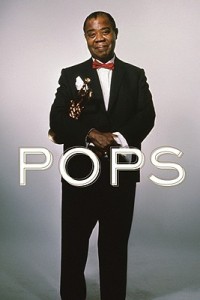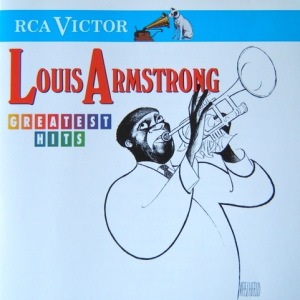Terry Teachout – Pops: A Life of Louis Armstrong (Houghton Mifflin Harcourt 2009)
Yuck. Terry Teachout–from the very beginning of Pops–positions himself as an apologist for Louis Armstrong‘s much-maligned later career. Any criticism or potentially unflattering aspect of Armstrong’s life is presented only to provide token credibility, but is then promptly explained away time and again. This whole book really comes across as a reaction to criticism of Armstrong’s efforts from the Forties onward. Now, Armstrong was a solid performer up to the end, but reactionary critics like Gary Giddins (and Teachout now too, a “well-known neocon”) just have it wrong if they want to argue that Armstrong was something other than an anachronism in his later life. A good analogy would be to pop artist Andy Warhol: both had this kind of “peasant ethic” (as people would describe Warhol) and both stuck with a particular style even as it became artistically irrelevant (if still commercially lucrative). But is anyone really going to staunchly defend Warhol’s lame portraits-for-hire phase from the Eighties (even if it did provide a few interesting nuggets at the fringes)? Yes, Armstrong overcame great adversity. But Armstrong’s sort of rugged individualism (i.e., proving that a black man could succeed in America, as Teachout frames the issue) kind of flies in the face of that problem. His own personal success came, in many ways, at the expense of advancing larger Afro-American interests. Satchmo emerged in the early days of jazz as a brilliant, once-in-a-lifetime talent. That can’t be duplicated. So it’s safe for the exclusionary cultural elite to grant him some success when it paves the way for nothing at all — even if that takes nothing away from Armstrong’s achievements. In that way, it helps to contrast Armstrong’s career with those of the members of Chicago’s Association for the Advancement of Creative Musicians (AACM), which set forth a clear alternative that was premised on self-determination and long-term sustainability. Armstrong certainly had no intention of setting back any causes (perhaps quite the opposite). But his efforts in the regard were misguided — an unfortunate consequence of his lack of education or whatever. In the Twenties and Thirties, it might have made a lot of sense, but by the Sixties, after Charlie Parker, after Malcolm X, maybe not so much. Times had changed, but Armstrong hadn’t. All this may seem a bit harsh, but it’s fair if just to counterbalance the hagiography provided by this text.
Another big problem here is the prose. Teachout’s writing is overly florid and ornate. While ostensibly “extensively researched,” very little of the historical material is really new, nor is much of it presented with any broad insight. It’s only there to build up the defense of the later years. Where the book does succeed is in painting a kind of psychological portrait of Armstrong as someone rather timid and perpetually in the sway of business managers, wives, etc. Still, compared to truly top-notch jazz bios, like John Szwed‘s Space Is the Place: The Lives and Times of Sun Ra, this comes up short.


